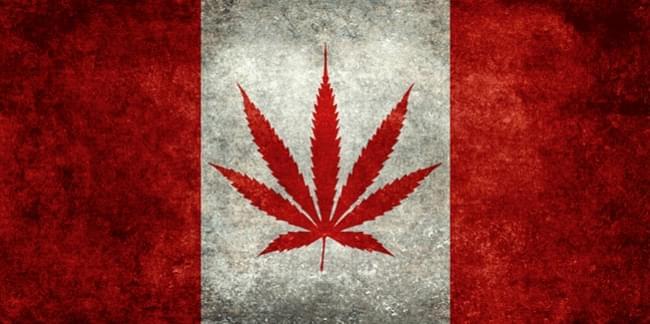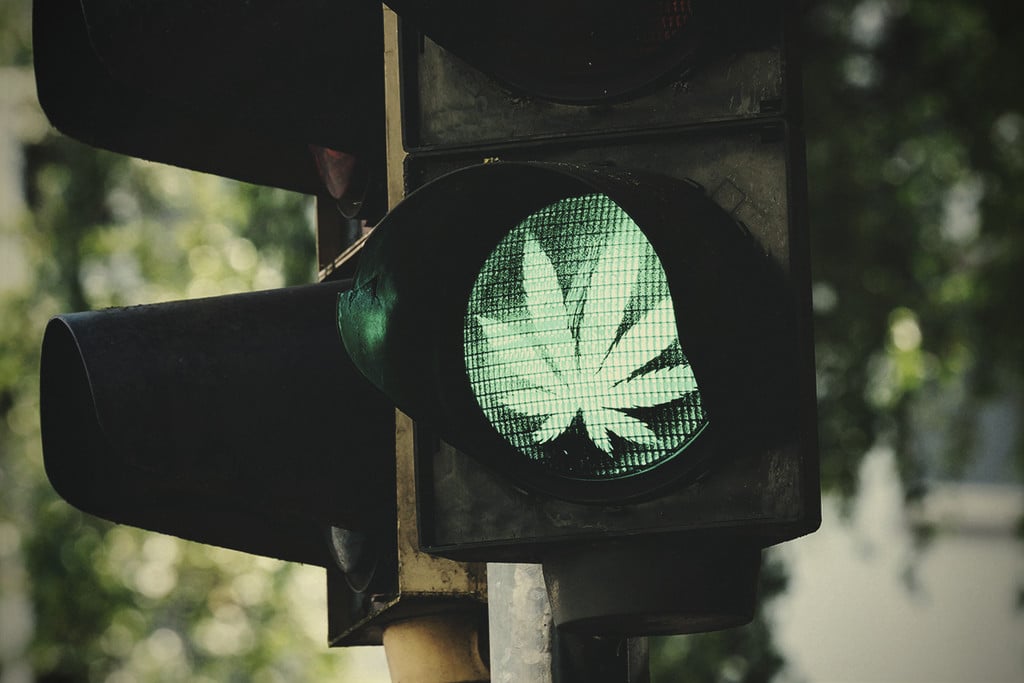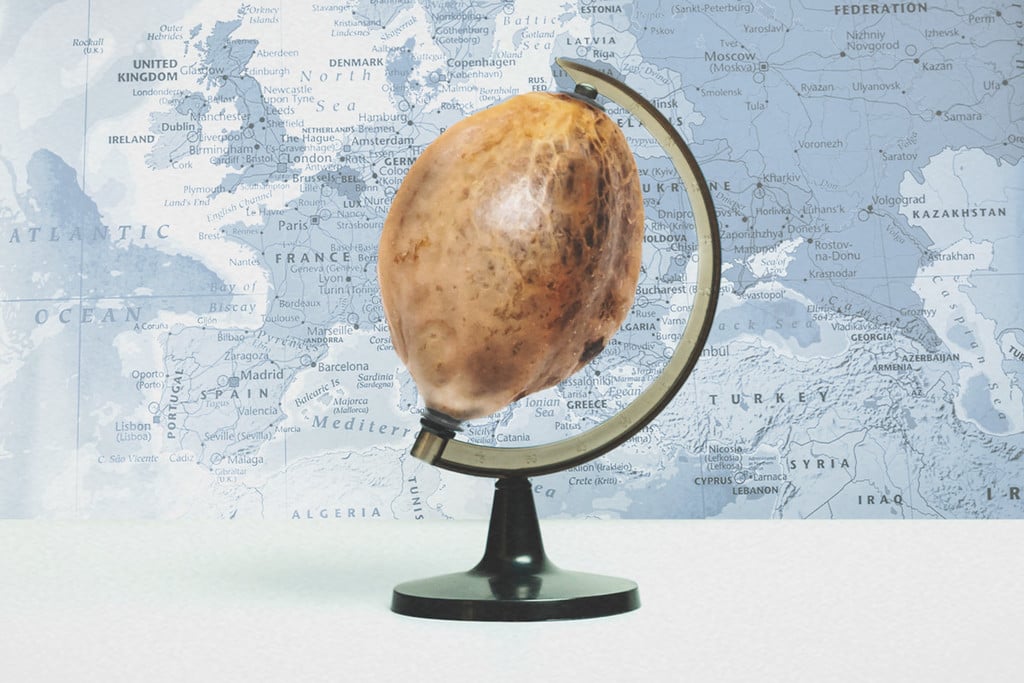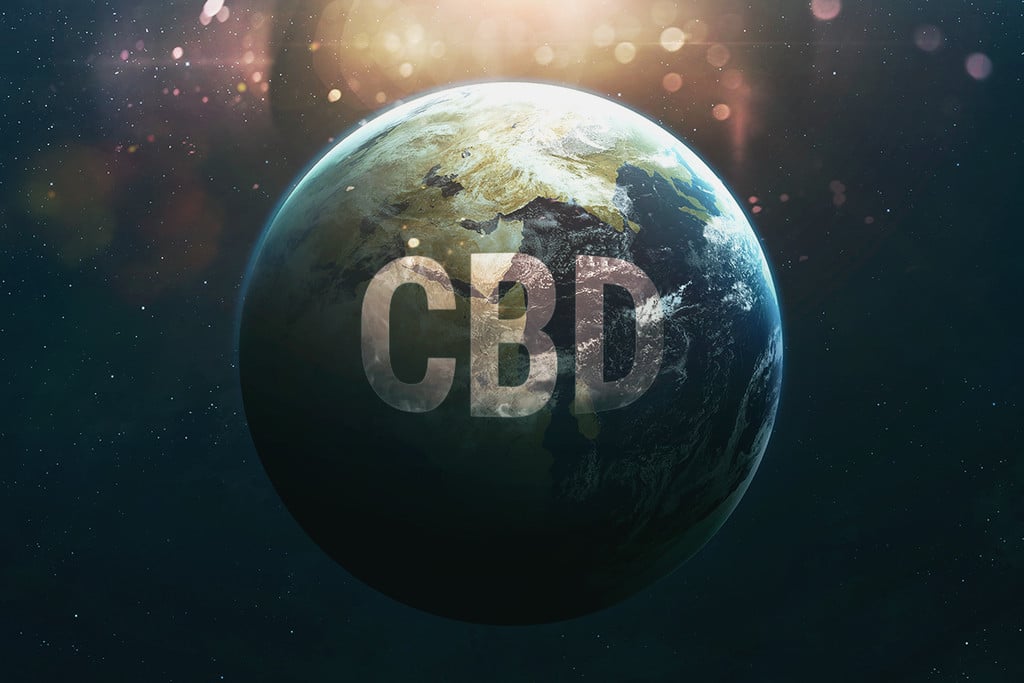.

7 Years Later: The Impact of Cannabis Legalization in the US
A lot has changed since some parts of the United States, specifically Colorado and Washington, first introduced legal cannabis in 2013. It’s still illegal on a federal level, but many more states have allowed for recreational and medical weed in the years since. So, just how far has legalization in the US come over the last seven years?
Contents:
- The current map of cannabis legalization in the united states
- What are the differences between recreational and medical cannabis?
- Why does the cannabis world look to the united states?
- How has legalization in the us impacted the rest of the world?
- Will the us federal government ever legalize cannabis?
- The drawbacks of the us approach to legalization
- The future of the us cannabis industry
Remember when Colorado and Washington state announced they’d be legalizing weed? That was seven years ago, and a lot has changed since. Let’s take an in-depth look at weed legalization in the United States, how it’s progressed, and what work needs to be done.
The Current Map of Cannabis Legalization in the United States
A total of 11 American states have legalized both recreational and medical cannabis:
| Alaska | California |
| Colorado | Illinois |
| Michigan | Massachusetts |
| Maine | Nevada |
| Oregon | Vermont |
| Washington |
| Alaska | California | Colorado | Illinois |
| Michigan | Massachusetts | Maine | Nevada |
| Oregon | Vermont | Washington |
A further 22 states have legalized medical cannabis only:
| Arizona | Arkansas |
| Connecticut | Delaware |
| Florida | Hawaii |
| Louisiana | Maryland |
| Minnesota | Missouri |
| Montana | New Hampshire |
| New Jersey | New Mexico |
| New York | North Dakota |
| Ohio | Oklahoma |
| Pennsylvania | Rhode Island |
| Utah | West Virginia |
| Arizona | Arkansas | Connecticut | Delaware |
| Florida | Hawaii | Louisiana | Maryland |
| Minnesota | Missouri | Montana | New Hampshire |
| New Jersey | New Mexico | New York | North Dakota |
| Ohio | Oklahoma | Pennsylvania | Rhode Island |
| Utah | West Virginia |
What Are the Differences Between Recreational and Medical Cannabis?
In those first 11 states, you’ll have access to recreational cannabis, which is available to any adult over 21 years of age. Medical cannabis, on the other hand, is only available to patients who use cannabis to treat particular issues. Qualifying conditions for medical marijuana vary widely from one state to another.
In many states, the shopping experience is different for recreational and medical cannabis users. In Colorado, dispensaries are divided into medical and recreational counters, and recreational users can only buy from the recreational side of the dispensary. Medical patients, however, can buy from both counters.
In some states, limitations on quantity and personal cultivation also differ between recreational and medical users. In Nevada, for example, recreational users can buy one ounce of cannabis at a time and grow up to six plants. Medical patients, given their needs, can buy 2.5 ounces at a time and grow up to twelve plants.
Some states also have laws allowing minors with specific ailments to access cannabis products. In Colorado, someone under the age of 21 can buy cannabis from medical-only dispensaries with two doctors' recommendations.
Is There a Difference in Potency Between Recreational and Medical-Grade Cannabis?
In short, no. Medical and recreational cannabis products can both contain the same concentrations of cannabinoids and terpenes. Sometimes, the only difference between medical and recreational-grade weed is the room it's grown in. Colorado grow houses, for example, need to have separate grow rooms for medical and recreational weed for health purposes.
Why Does the Cannabis World Look to the United States?
For many cannabis users around the world, living in a state like Colorado, California, or Alaska sounds like paradise. But why is the US’ approach to legalizing cannabis so highly regarded by the cannabis community?
It may all come down to the numbers. Over the last seven years, the US has built the world’s largest consumer market for cannabis. Unlike Uruguay, which legalized cannabis nationally in 2013, but still hasn’t developed a strong industry for the plant, weed is worth billions of dollars in the US.
Now, Uruguayans can buy a small amount of flower from the pharmacy, go to a relaxing cannabis club, or grow their own weed at home. Americans, in contrast, can walk into boutique dispensaries and drop thousands of dollars on the herb. Super potent concentrates, vape pens, premium flower with 30%+ THC, infused cosmetics, edibles, and more are within grasp.
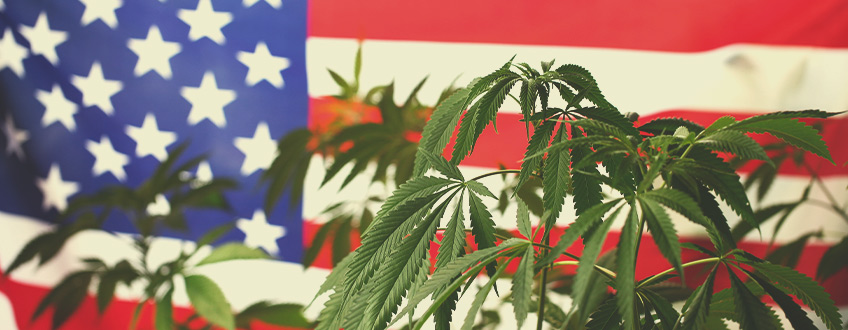
Not even the Canadian cannabis market can compare to the US. New estimates suggest that the cannabis industry in Canada, which legalized cannabis nationally in 2018, might be worth $5 billion by 2021. That seems like a lot, of course, until you remember the US weed market is expected[1] to be worth over $15 billion in 2020. All the while, it remains federally illegal.
Given the market in the US, it’s no surprise that its legal states have innovated the way we grow, process, and consume cannabis. Whether you’re a grower or consumer, it’s hard to find a better reference than the States for inspiration and innovation. In California, cannabis growers have been developing products since 1996, and many consider the West Coast to be the epicentre of weed culture.
Finally, we also need to remember that the US is one of the most powerful and influential countries in the world. Hence, it’s no wonder that governments around the world look to the US for ideas on what to do (and what not to do) when it comes to legalization.
How Has Legalization in the US Impacted the Rest of the World?
Following Uruguay’s decision to legalize cannabis in 2012, Colorado and Washington state also decided to try their hand at creating a legal, regulated market for cannabis. The Obama administration decided against using federal law to override states’ decisions, giving them a chance to decide for themselves.
Given the US’ tremendous global influence, it goes without saying that legalization in Colorado and Washington had an impact on the rest of the world. Just a few years later, Canada also voted in favour of legalization. Australia has also slightly changed its approach to dealing with cannabis, legalizing medical use nationally, and recreational use in the Australian Capital Territory.
Mexico, one of the world’s largest producers of cannabis, has also been debating legalization since 2018, after a supreme court decision ruled that the laws prohibiting cannabis use were unconstitutional. While the nation still hasn’t officially legalized, its lawmakers are discussing a bill that would potentially legalize cannabis, regardless of THC content, for medical, recreational, and industrial purposes. With a population of 130 million people, Mexico’s cannabis market could potentially grow to be one of the biggest in the world.
Other countries that have begun changing their approach to dealing with cannabis following legalization in the US include:
- The UK, which has legalized doctors to prescribe medical cannabis.
- South Korea, which has also legalized medicinal use (to some extent).
- Lesotho, which became the first African nation to legalize the cultivation of medical cannabis in 2018.
- Lebanon, which has also legalized the cultivation of medical cannabis.
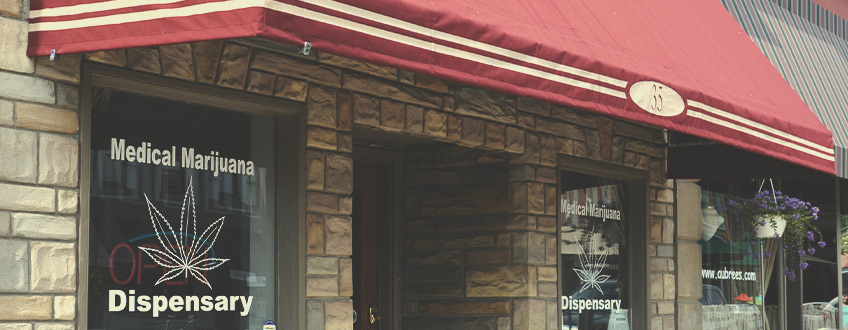
Will the US Federal Government Ever Legalize Cannabis?
As more and more states jump on board the legalization bandwagon, it begs the question of when, if ever, the US will move to legalize cannabis on a federal level.
If there’s ever been a time when legalization seems like a logical step to take, it’s now. Cannabis has proven to be an essential industry during the first half of 2020. As COVID-19 brought countless industries to a standstill, cannabis sales in the US[2] hit record highs.
Federal legalization would finally put an end to the many railheads limiting the growth of this budding industry, such as:
- Banking restrictions: Federal legalization of cannabis would mean thousands of cannabis businesses would finally have access to funding, safe banking, and listed exchanges.
- National and international commerce laws: As cannabis is federally illegal, its trade is limited to legal states only.
- Taxation: Right now, legal states have their own way of dealing with cannabis taxes, and some are doing a much better job at this than others.
We are seeing at least some progress on a federal level regarding cannabis. In 2019, Congress passed the Secure And Fair Enforcement Banking Act[3], which helped to establish protections for financial and other service providers engaging with legitimate cannabis businesses. Legalization also polls well among both the Democratic and Republican political parties—something that’s very rare in today’s political climate.
While the US is probably the closest it has ever been to federal legalization, it’s important to realise that there’s still a lot of political work that needs to be done in order for this long-lived dream to become a reality. No matter how it’s done, creating a regulated cannabis industry with the proper regulations, safeguards, taxing, funding, and financing is going to take time.
The Drawbacks of the US Approach to Legalization
Legal states in the US all have their own unique ways of dealing with recreational and medical cannabis. Up until today, no state has found the perfect way to legalize and regulate weed. Here are some of the drawbacks of the US approach to cannabis legalization.
Cost Management
Colorado cashed in over $1.5 billion in cannabis taxes in 2017. However, the state spent over 70% of that money on curbing the costs of regulation, licencing, and administration. While it’s true that legal weed can generate billions of dollars of income, it’s also expensive to run. States may benefit from taxation, licencing, or regulatory models that help minimise these costs and drive more revenue.
Public Health Concerns
While we know that cannabis isn’t nearly as dangerous as Ronald Reagan made it out to be, it isn’t completely safe, either. Smoking cannabis, for example, has been linked to many of the same health issues as smoking tobacco. That, to be fair, is only because they both involve inhaling smoke.
Even then, though, there are health concerns about vaporizing high-potency extracts, as research on them is scarce. Some states even experience spikes in poison centre calls after they legalize marijuana, although that’s mostly due to children accidentally ingesting it. States and countries looking to legalize cannabis, in turn, need to find ways to mitigate these public health concerns.

Increased Consumption
There is evidence to support that the amount of people consuming cannabis increases post-legalization. In Colorado, cannabis use among 18–34-year-olds increased over 9% from 2016 to 2017. This could be due to lax regulations regarding the marketing of cannabis products in Colorado. Canada, in contrast, has seen much lower increases in cannabis consumption since legalization, which could be due to its stricter approach on how cannabis products are sold and marketed.
Inconsistent Approaches to Medical Cannabis
Medical cannabis laws vary widely from one state to another. California, for example, has been criticised in the past for making it too easy to get a medical marijuana card. On the other hand, New York[6] has been called out for making it infuriatingly hard for patients to access medical weed.
While legal states are obviously ahead of those where cannabis remains illegal, many of these states still have a ways to go regarding the safety and accessibility of their medical marijuana programmes. If you want more information, the Americans for Safe Access 2019 State of States report[7] offers in-depth insight into the different medical programmes across the country, including their strengths and their shortcomings.
Failure to Clear Cannabis Convictions
States that have legalized cannabis are now faced with the challenge of how to deal with prisoners with cannabis-related convictions. While California has been applauded for releasing people imprisoned on cannabis[8] charges and dropping the convictions, other states haven’t followed suit.
For any government looking to legalize cannabis, the treatment of past marijuana offenders is a very important consideration. Historically, the US has been quick to incarcerate people of colour for petty weed crimes, especially young Black men. As a result, the dichotomy between a booming mainstream cannabis industry and the dark past of marijuana convictions is hard to ignore.
The Future of the US Cannabis Industry
Cannabis legalization is very complex. And while the US might be the centre of attention in this domain, it still has a long way to go in building a well-regulated, reliable industry. The laws, above all else, need to protect patients and recreational users. Nonetheless, while the federal government tiptoes around legalization, the US is closer than ever to supporting a national cannabis industry.
- Exclusive: US retail marijuana sales on pace to rise 40% in 2020, near $37 billion by 2024 https://mjbizdaily.com
- Cannabis in high demand amid coronavirus pandemic | Business| Economy and finance news from a German perspective | DW | 05.05.2020 https://www.dw.com
- Text - H.R.1595 - 116th Congress (2019-2020): Secure And Fair Enforcement Banking Act of 2019 | Congress.gov | Library of Congress https://www.congress.gov
- “Cannabis Poisoning” Calls for Children Have Doubled in Massachusetts | Articles | Analytical Cannabis https://www.analyticalcannabis.com
- What has changed since cannabis was legalized? https://www150.statcan.gc.ca
- Here's How Infuriatingly Hard It Still Is to Get Medical Marijuana in New York - Filter https://filtermag.org
- 2019 State of the States - Americans for Safe Access https://www.safeaccessnow.org
- California cities releasing marijuana prisoners, dropping convictions https://www.thecannabist.co


























